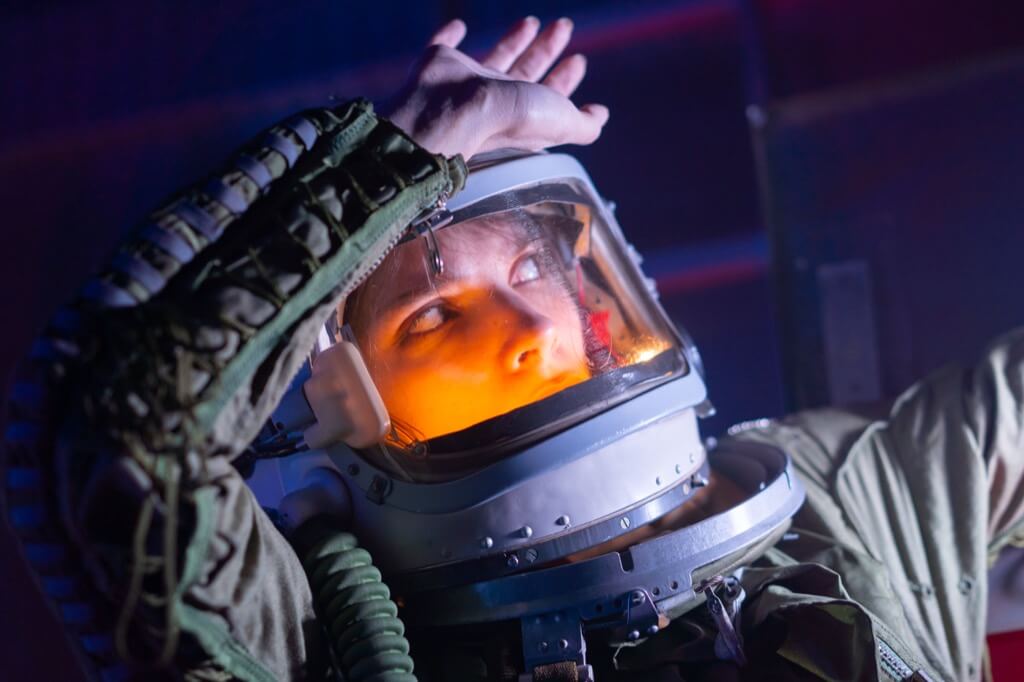Space, often depicted in science fiction as a battleground replete with advanced weaponry, contrasts sharply with the reality of space exploration. Unlike the armed characters in popular sci-fi series, real-life astronauts have historically embarked on missions focused on peaceful exploration and scientific research. However, there’s an intriguing aspect of space history where reality slightly mirrors fiction, albeit for reasons far removed from interstellar combat.
In the early days of space exploration, the journey to the stars was closely intertwined with military ambitions, particularly during the Cold War. The Space Race, often viewed as a peaceful competition, had underlying military motivations. The Soviet R-7 rocket, which launched Sputnik I, doubled as an intercontinental ballistic missile. Similarly, the U.S. also repurposed military technology for space missions, with rockets like the Redstone and Atlas originating from their nuclear arsenal. This era saw both superpowers exploring the militarization of space, including ambitious projects like detonating nuclear warheads on the moon.
Amidst growing concerns about the militarization of space, the Outer Space Treaty was signed in 1967 by major spacefaring nations. This treaty marked a significant shift towards peaceful space exploration, prohibiting the claiming of celestial bodies and the deployment of weapons of mass destruction in space. It set the tone for future space missions, emphasizing exploration and scientific discovery over military conquest.
Contrary to the peaceful ethos of space exploration, Soviet and later Russian cosmonauts routinely carried firearms on their missions. However, these weapons weren’t intended for space combat but for a much more pragmatic reason: survival upon unexpected landings on Earth. The story of cosmonaut Alexei Leonov’s harrowing spacewalk and subsequent emergency landing illustrates the need for such survival gear.
In 1965, Alexei Leonov became the first person to conduct a spacewalk. His mission, however, faced numerous challenges, culminating in an off-course landing in the Siberian wilderness. Faced with extreme cold and potential encounters with wildlife, the survival kit’s standard-issue Makarov PM pistol seemed inadequate. This experience led to the development of the TP-82 Cosmonaut Survival Pistol, a versatile weapon designed to aid cosmonauts in similar emergency landings.
The TP-82, introduced in 1981, was a remarkable innovation in survival equipment. It featured three barrels: two for shotgun shells and one for rifle ammunition, and its detachable shoulder stock doubled as a machete. Stored in Soyuz spacecraft, this weapon was equipped with ammunition designed for maximum effectiveness against large predators, adhering to the practical needs of survival rather than militaristic purposes. The TP-82’s design and testing emphasized its reliability and effectiveness in extreme conditions, making it an essential component of the cosmonauts’ survival kit.
Functionality of Cannons in Space
Discussing the feasibility of artillery in space raises interesting questions about physics and space mechanics. Theoretically, a cannon could function in space. If both the target and the cannon are in the same orbit, the relative velocity between them would be zero. This means that an artillery shell fired from a space cannon would have the same effective velocity as it would on Earth. This concept challenges our Earth-bound perceptions of weaponry and its potential adaptations in space environments.
Astronauts and Guns: A Practical Perspective
Contrary to popular belief, astronauts have carried guns not for defense but for maneuverability. The hand-held maneuvering unit, resembling a gun, allowed astronauts to control their movements more effectively during spacewalks. Providing impulses to move towards or away from the spacecraft, this tool showcases how guns, or gun-like devices, can serve practical, non-combative purposes in space.
Firearms in Space-Themed Entertainment
In popular culture, the portrayal of firearms in space settings often takes creative liberties. For example, the TV show “For All Mankind” uses hybrid M16 rifles, modified to fit the narrative and visual aesthetic of the series. This blending of real gun models with fictional elements reflects the fascination and speculative nature of firearms usage in space-themed entertainment.
The Concept of a Space Gun
The idea of a space gun, a large gun- or cannon-like structure for launching objects into space, has been a part of both science fiction and theoretical science. Often referred to as a Verne gun, named after Jules Verne’s depiction in “From the Earth to the Moon,” this concept explores the possibilities of non-rocket space launch, highlighting the intersection of imagination and scientific speculation in our quest to conquer space.
Foundations of Space Law
The cornerstone of international space law is the 1967 Outer Space Treaty, signed by major spacefaring nations. This treaty establishes the basic framework for the peaceful use of outer space. It prohibits the placement of nuclear weapons or any other weapons of mass destruction in orbit around Earth, on celestial bodies, or in other outer space locations. However, it doesn’t explicitly ban conventional weapons, like guns, leaving a grey area in space armament regulations.
While the Outer Space Treaty forms the basis, subsequent agreements, and national laws have further clarified the legal stance on weapons in space. The 1979 Moon Agreement, although not widely ratified, extends the principles of the Outer Space Treaty to the Moon and other celestial bodies, emphasizing their use for peaceful purposes. These agreements collectively work to prevent the militarization of space, although the specifics on conventional weapons remain less clear-cut.
National laws also play a crucial role in governing activities in space, including the use of weapons. Countries like the United States, Russia, and China have their own sets of regulations governing space activities, which must align with international treaties. These laws typically focus on the peaceful exploration and use of outer space, but they also need to address the potential use of firearms or other weapons by astronauts for self-defense or other purposes.
Enforcing laws in space presents unique challenges. Unlike Earth, where law enforcement agencies can monitor and enforce rules, the vastness and accessibility of space make practical enforcement difficult. This situation requires international cooperation and trust, as monitoring and ensuring compliance with space laws rely heavily on the goodwill and mutual interests of spacefaring nations.
As space exploration advances and more countries and private entities venture into space, the discussion around space laws, including the use of guns or other weapons, becomes increasingly important. Future space missions, particularly those involving prolonged human presence on celestial bodies, might necessitate clearer regulations regarding the use of firearms for safety and security. This ongoing evolution of space law highlights the need for continual dialogue and adaptation to the changing landscape of space exploration.
Risks Of Using A Gun In Space
- In the microgravity environment of space, firing a gun presents unique challenges due to Newton’s Third Law of Motion – for every action, there is an equal and opposite reaction. When a gun is fired in space, the force of the bullet being expelled from the barrel would propel the astronaut backward. This recoil effect could cause them to spin or move uncontrollably, potentially leading to collisions with other objects or the spacecraft itself, posing a significant risk to their safety.
- One of the most critical dangers of using a firearm in space is the risk of breaching the spacecraft’s hull. A bullet could easily penetrate the walls of a spacecraft, leading to depressurization. Even a small hole could have catastrophic consequences in the vacuum of space, including loss of oxygen and destabilization of the spacecraft’s controlled environment.
- The lack of gravity and the different behavior of objects in space also affect an astronaut’s ability to aim and shoot accurately. Factors such as the lack of atmospheric drag and altered ballistic trajectories in microgravity mean that shooting a firearm in space would not behave as it does on Earth. This unpredictability could lead to unintended harm, either to the astronaut themselves or to essential equipment.
- Firing a gun in space could also create debris and shrapnel, which pose significant hazards. In the confined space of a spacecraft, ricocheting bullets or fragments could cause injury or damage critical systems. Furthermore, outside the spacecraft, any debris created becomes part of the growing problem of space debris orbiting the Earth, which can pose risks to other spacecraft and satellites.
- The loud noise of a gun being fired could have detrimental effects on an astronaut’s hearing, especially in the confined space of a spacecraft where sound does not dissipate as quickly as on Earth. Additionally, the psychological implications of having a firearm in such an environment, where the focus is on scientific exploration and teamwork, could impact the crew’s morale and dynamic.
While the notion of astronauts armed to the teeth as in science fiction remains a fantasy, the reality of space exploration has its own fascinating stories. The presence of firearms in space missions, particularly in Soviet and Russian programs, was driven by practical survival considerations rather than aggressive intentions.




